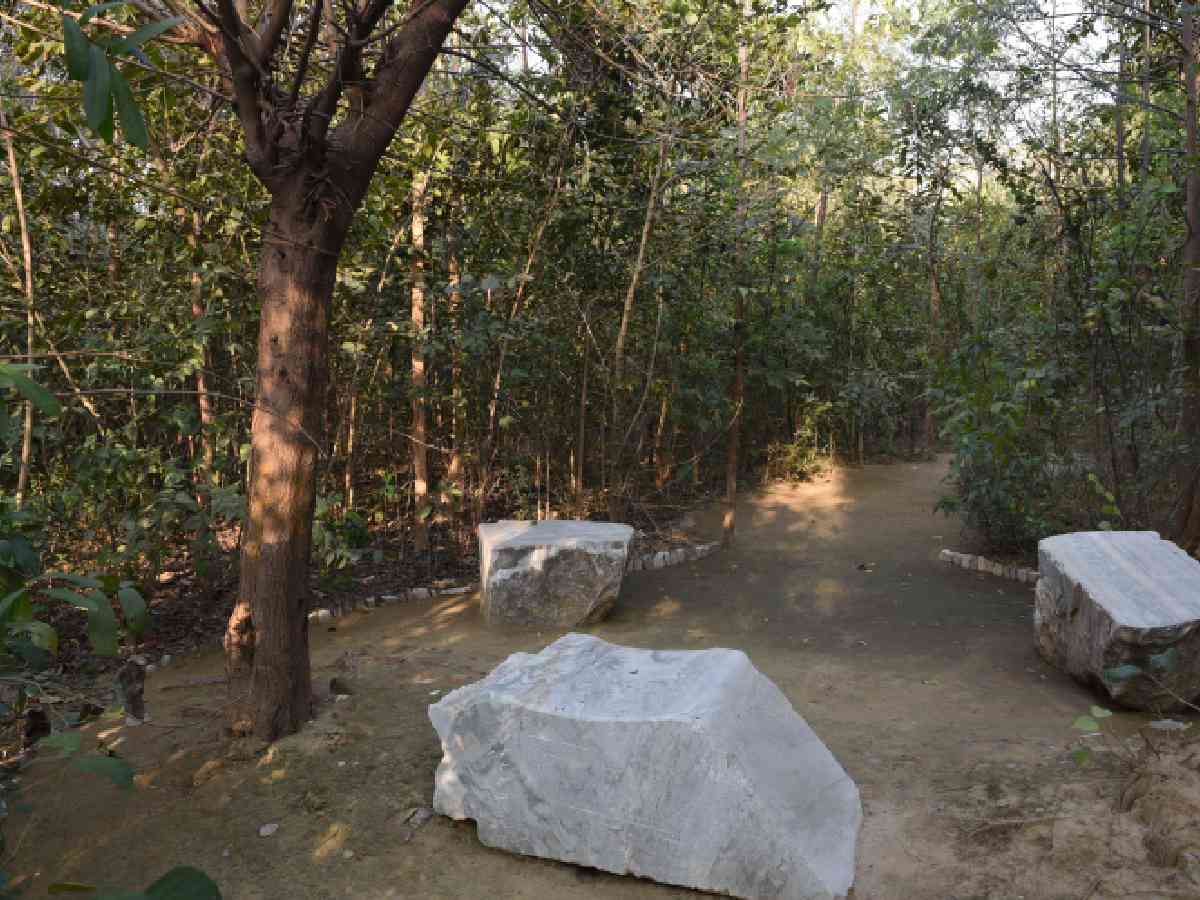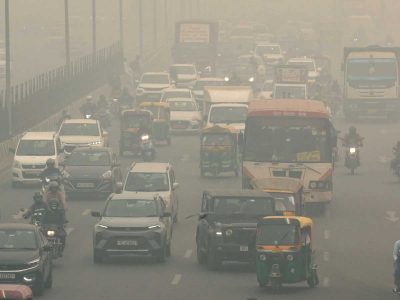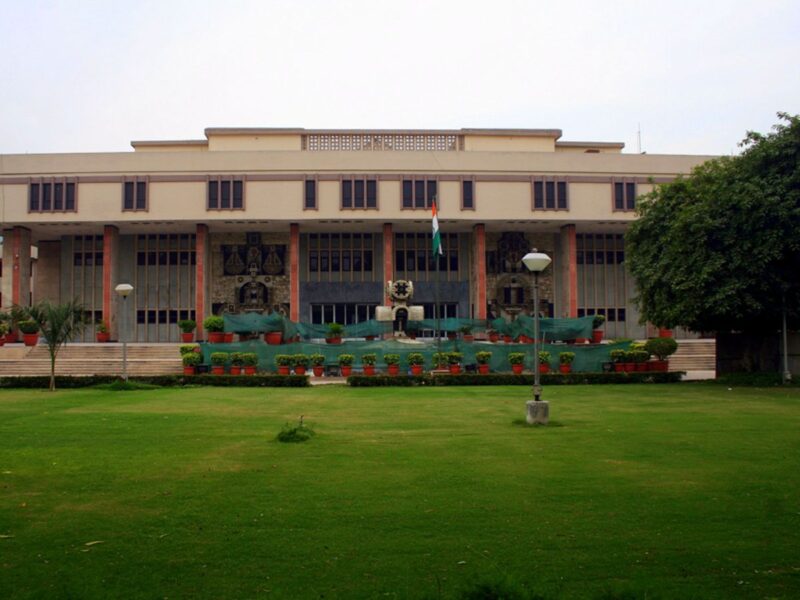Miyawaki forests: Killing the original ecosystem and replacing it with another technique in the name of fighting climate crisis and pollution makes no sense, as it will not solve the real problem of capital, environmentalists have said.
Bhavreen Kandhari, an environmentalist, says that instead of protecting the natural ecosystem, the authorities are cutting the ‘lungs’ of Delhi — the Ridge and Aravallis — and creating green patches such as Miyawaki, which cannot be called a forest in any way. A forest is a complete ecosystem, not a clutter of trees planted anywhere, they say.
“The entire outer ring road is a deemed forest, but over the years, a chain of flyovers has replaced it. Instead of protecting the existing forests, creating a narrative of Miyawaki as ‘forests’ in Delhi is a complete sham and waste of public funds,” Kandhari said.
“The concept of high-density plantation, commonly referred to as the Miyawaki method, is actually seen as problematic by many conservationists. The idea of a ‘Miyawaki forest’ is largely a myth with significant shortcomings, even in the short term, despite being well marketed,” she added.
Also read: Kanwar Yatra: How devotees are adjusting to Delhi’s camps
Moulshri Joshi, architect and expert, shares, “I understand the appeal of Miyawaki, but its promise of delivering a diverse and resilient forest ecosystem is not well documented in the Indian context. Perhaps, its use should be limited to beautifying barren, urban patches like flyover intersections while we study its long-term impact in the Indian context.”
“Contrary to popular belief, regular plantation methods do not take more time than Miyawaki. In Miyawaki plantations, trees grow tall quickly due to intense competition, creating an illusion of rapid growth. However, they do not grow in width, which is not indicative of healthy, sustainable growth. This method goes against the principles of natural forest development.” He says that India requires natural forests.
“India needs natural forests that are suitable for its diverse geography, not Miyawaki forests. For instance, parts of Kutch are naturally grasslands, and efforts should focus on reviving these grasslands rather than planting forests. Replacing one habitat type with another in the name of greening initiatives, such as Miyawaki or the Green Credits system, is counterproductive and harmful to the ecosystem.”
Vallari Sheel, an urban ecologist, said, “Instead of adopting the Miyawaki method, we should focus on planting native species, including a mix of trees, shrubs, herbs, and climbers, giving each plant the space it needs to thrive. This approach is not only more cost effective — at least 10 times cheaper than Miyawaki — but also offers many more ecological benefits. Forests are complete ecosystems, and destroying them for development while using commercial techniques like Miyawaki is not a sustainable solution. Politicians may favour these money-making projects, but they do not address the core environmental concerns.”
Sheel also pointed out that Miyawaki forests are being planted in wrong places.
“Miyawaki forests are often planted in ecosystems that have never supported dense tree growth, such as Kutch in Gujarat, Jaipur in Rajasthan, and Hyderabad in Telangana. Planting Miyawaki saplings in these arid landscapes, which naturally support grasslands or shrublands, can disrupt native ecosystems, harm local flora and fauna, and deplete already scarce water resources. These plantations can alter the hydrology of the region, affecting plants and animals adapted to the native conditions.”
Ecologists argue that even if the right plants are chosen for the right soils, the Miyawaki technique fundamentally violates the principles of restoring ecosystems to their natural state. The Miyawaki method creates an artificial forest that does not replicate the diversity and complexity of natural forests. While it may be useful for restoring biodiversity and combating climate change in urban areas where land is scarce, it is not a viable solution for broader environmental conservation.
Sheel adds, “In all, the Miyawaki method is not suitable for addressing India’s environmental concerns. Instead, we should focus on planting native species and preserving natural ecosystems, which are more sustainable and beneficial in the long run.”
The Municipal Corporation of Delhi (MCD) has developed 11 such forests in the national capital at different locations, including Dallupura village, DDA quarters in front of Dilshad Colony, a mill in Karawal Nagar, C3 in Nand Nagari, near a petrol pump in Seelampur, JJ Colony in Keshavpuram, opposite the police chowki in Keshavpuram, Pocket 13 in Rohini Sector 22, and G Block in Rohini’s Prashant Vihar, Shahdara south and north, Keshavpuram, Narela, and Rohini zones.
Also read: Delhi coaching centre deaths: Rescue divers came two hours after the incident, survivors recount
All of the trees inside the forest are said to belong to the native species of Delhi. The national capital has a total of 78 recognised native tree species, including Amaltas, Mulberry, Neem, Amla, and Banyan trees, among others.
According to an official privy to the development, this initiative is part of their Corporate Social Responsibility (CSR) project, which seeks to reduce the amount of pollution in the city and maintain green cover.
However, no tender was floated to build the forests, and instead, they followed the nomination method, the official claimed. The society where they were building the forest would nominate the person they wanted to take charge. Presently, most forests have entered Phase 2.
“The Miyawaki method provides faster growth of saplings, helps in growing denser forests, and reduces dust while supporting better carbon dioxide absorption. In this process, the agency does close planting — about three to five saplings in one square metre area. The height of each sapling is 1-3 feet. Further, 20-50 different species are planted in one place. Such forests require no maintenance one to two years,” said an official.
“Considering that the majority of these parks are located close to residential areas, we want the public to use the facilities. That’s why we have decided to create a sitting and walking area. This will also help in the regular maintenance of the place,” said the official.
MCD will adopt different techniques to ensure the survival of the majority of the plants, including planting saplings at a distance, increasing the depth of plantation, and manuring and regular monitoring by field staff. Indigenous plants such as pilkhan, arjun, banyan, jamun, neem, guava, and mango are given preference.
“We are arranging these saplings from our 20 nurseries and encouraging fresh plantations to ensure regular supply,” said the official. Before developing such a mini forest, an inspection is done, followed by soil testing and revival of soil through natural processes.
“Based on the testing report, appropriate biomass is selected for mixing with the soil. We also verify the type of waterbody nearby, if any, and its distance from the site,” said the official.
The site is then excavated, creating a trench of one metre after removing soil from the entire land. This is followed by mixing husk, hay, manure, and biomass, in the dug-up soil. The soil is then spread loosely in the pit so that plants can grow easily.





